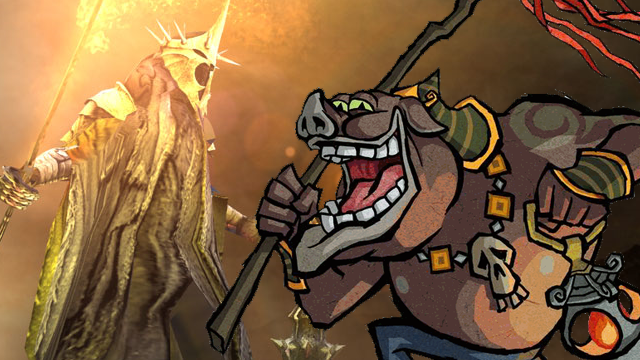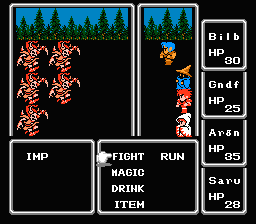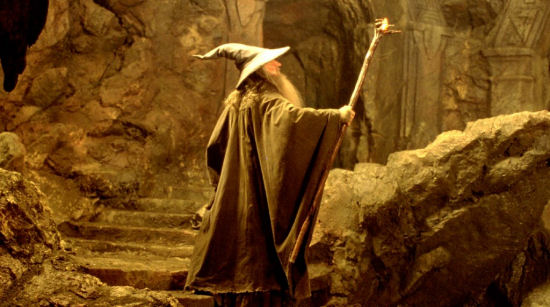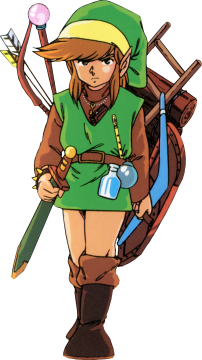
It’s a little-known fact that J.R.R. Tolkien, the author of The Hobbit, The Lord of the Rings and The Silmarillion, was best friends with former Nintendo of Japan executive Hiroshi Yamauchi. In fact, Yamauchi was directly inspired by Tolkien to develop the Nintendo Famicom, and– oh, who are we kidding? Though both Tolkien and Yamauchi are directly responsible for sprawling tales of epic proportions (we can compare The Lord of the Rings to the chronology of Nintendo, right?), they likely never heard of each other, much less were buddies– but nevertheless, here in modern Videogameland, Tolkien’s influence is more than piddling. From elves to dwarves to halflings (oh my), Tolkien’s works of high fantasy show up almost everywhere gamers turn, and we’re all the better for it. Here’s two of the major culprits.
Final (High) Fantasy
 Everyone knows the story about Final Fantasy for the Nintendo Entertainment System, but it still bears repeating. Hironobu Sakaguchi, then a twenty-five-year-old working for Square, was unsure whether to continue working or go back to university, and as such titled what he thought what would be his last game Final Fantasy— and of course, the rest is history. But fortunately for Sakaguchi and Square’s A-Team– artists Yoshitaka Amano and Kazuko Shibuya, writer Kenji Terada, designers Hiromichi Tanaka, Akitoshi Kawazu and Koichi Ishii and programmers Nasir Gebelli, Kiyoshi Yoshii and Ken Narita– half of the scenario work was done for them already. The world was already familiar with the type of fantasy Final Fantasy espoused thanks to a Mr. Tolkien.
Everyone knows the story about Final Fantasy for the Nintendo Entertainment System, but it still bears repeating. Hironobu Sakaguchi, then a twenty-five-year-old working for Square, was unsure whether to continue working or go back to university, and as such titled what he thought what would be his last game Final Fantasy— and of course, the rest is history. But fortunately for Sakaguchi and Square’s A-Team– artists Yoshitaka Amano and Kazuko Shibuya, writer Kenji Terada, designers Hiromichi Tanaka, Akitoshi Kawazu and Koichi Ishii and programmers Nasir Gebelli, Kiyoshi Yoshii and Ken Narita– half of the scenario work was done for them already. The world was already familiar with the type of fantasy Final Fantasy espoused thanks to a Mr. Tolkien.
Here was a man who created an entire fictional world filled with orcs, goblins and other crazy creatures, not to mention ages’ worth of heroes and heroines with magical powers or mystic weapons, as well as a propensity for cryptic prophecies and countless reams of poetry. All Sakaguchi had to do was change some names and make some prophecies of his own– and so did Final Fantasy come about. (Andrew knows this is an oversimplification– please don’t send death threats. Or bombs. -Ed.) Taking even the briefest glance at the classes available in the game– Fighter, Thief, Black Belt, Black Mage, White Mage and Red Mage– evokes memories of the Fellowship of the Ring journeying off to destroy Sauron and his vast armies. And though the four-letter limit for character names certainly stopped players from naming their entire party properly after Frodo’s buddies, it didn’t keep them from imagining a journey through Middle-Earth.

Black Mage was originally “Grey Mage,” but Gandalf’s lawyers kept sending cease-and-desist letters.
Final Fantasy has since grown from its humble roots, growing into games less concerned with killing goblins or godly kings and more concerned with whatever the plot of Final Fantasy XIII is supposed to be (politics? racism? something like that), keeping Tolkien’s influence more visible towards the beginning of its history. The Final Fantasy games have even managed to develop their own mythology, and gamers can easily recognize crystals, airships, Cid (and Biggs and Wedge), chocobos and summons as all cornerstones of the Final Fantasy mythos. But when it comes to the very root of the games’ storylines, it all boils down to one essential plotline: change is coming to an otherwise idyllic paradise, and the main characters must fight it off to keep the status quo and the world’s spirits high, possibly getting sad/happy/angry/other in the process. When we think about how that parallels The Lord of the Rings (Sauron, a.k.a. Industrialism, encroaches upon the territories of Middle-Earth, a.k.a. Pre-WWI Britain, and people get sad/happy/angry/other in the process), that plotline becomes incredibly familiar. Tolkien, though, would probably be okay with that.
Of course, we can’t wholly attribute Final Fantasy to Tolkien. After all, its role-playing gameplay was a simplification of such games as Wizardry or Ultima for the Apple II computer systems, which were based on Wizards of the Coasts’ popular Dungeons and & Dragons tabletop RPG, which has elves and orcs and dwarves that are all based on the mythology created by… oh. Well, never mind.
The Legend of (the Elf Named) Zelda
On the other side of the spectrum, The Legend of Zelda incorporates Tolkien tropes not in terms of storyline– though just thinking about an elf smashing monsters with swords evokes thoughts of Legolas kicking Uruk-Hai fanny– but more in terms of character. Actually, no. We’ve changed our minds. Hyrule may not be an exact copy of Middle-Earth, but it’s certainly got its own eerily similar mythos. Here goes, straight from Ocarina of Time and A Link to the Past:
Eru Ilúvatar Din, Nayru and Farore come down from the heavens to create the world, leaving behind some very tempting Rings of Power a Triforce in the Sacred R ealm; Morgoth Sauron Ganon tries to usurp the power of the gods by taking the Triforce and succeeds, thus transforming Middle-Earth the Sacred Realm into a world filled with darkness and other such evil things. And of course, only some guy from the rural Shire a short elf from some forest or farm, being a chosen of the gods with pointy ears and a pure heart full of courage, can take up arms to destroy Ganon– though he can never be totally destroyed, because he’s practically a god with that One Ring to Rule Them All Triforce of Power.
ealm; Morgoth Sauron Ganon tries to usurp the power of the gods by taking the Triforce and succeeds, thus transforming Middle-Earth the Sacred Realm into a world filled with darkness and other such evil things. And of course, only some guy from the rural Shire a short elf from some forest or farm, being a chosen of the gods with pointy ears and a pure heart full of courage, can take up arms to destroy Ganon– though he can never be totally destroyed, because he’s practically a god with that One Ring to Rule Them All Triforce of Power.
Meanwhile, Link is aided by technological marvels that have recently entered the world of the sublime (Spinners, anybody? How about a huge friggin’ Train?), and the powers of the Lady Arwen Galadriel Princess Zelda. Link’s also very good at maintaining interracial communication, being anything from a brother to an estranged husband of the Rangers of the North Sheikah, Dwarven Goron, Elven Zora and random Races of Men Gerudo royalty, to say nothing about one-shot races like the Picori or Subrosians or Ents. Meanwhile, Ganon can only make friends with his own people– or mind-controlled/bribed losers– and a splinter group of that people, at that. It’s incredible that the races Link contacts don’t join up and become a Fellowship of the Ring Triforce with him– though games would probably go much quicker that way.
That being said, to the credit of designers of the Zelda series, all that is really only visible when considering the exposition in games like Ocarina of Time, where the origin of Hyrule is actually explicitly discussed. Most of the time, gamers just think about how whimsical it is to play as an elven guy with a propensity for dressing in a girly tunic and beat the crap out of giant pigs– and though the elven part is certainly Tolkienesque, the giant pig part is all Nintendo.
There’s a lot more out there in Videogameland that owes its very existence to Tolkien– but Final Fantasy and The Legend of Zelda definitely are two of the best examples. Again, that’s not to say that they’re not original in their own rights, because Tolkien is really just a baseline; honestly, when we think “Final Fantasy”, we think “summoning giant monsters,” and when we think “Zelda,” we think “this guy is pretty awesome for someone who wears a chain mail skirt.” If anything, it’s a testament to the creativity inherent in Videogameland that developers can take a somewhat tired genre of high fantasy and transform it into something completely different– and nobody’s complaining.




 ShareThis
ShareThis







Strikethrough FTW! Great analysis… There’s no way I could ever get through The Silmarillion. But I can spell it, so I guess that counts for something.
Exactamundo! No offense to Tolkien, but some of his books are so needlessly informative that the thought of reading them puts me to sleep. I did finish The Hobbit and LOTR, though.